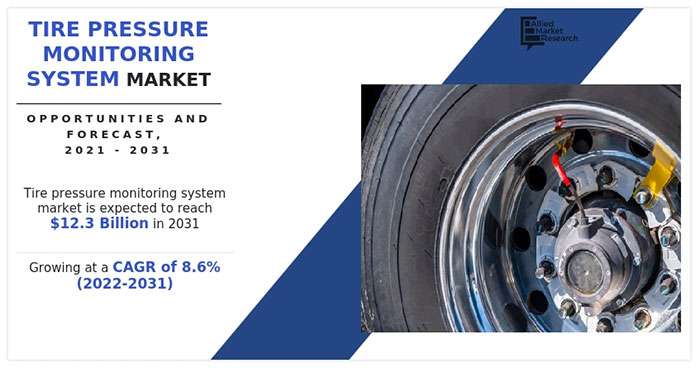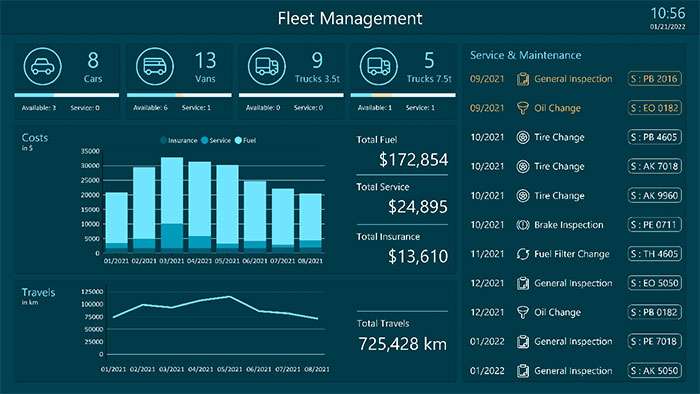
Smart tires deliver measurable results for fleet operations through embedded sensors that track performance metrics every few seconds. The global Smart Tire Market is projected to reach US$ 200 billion by 2033, growing at 7.8% annually over the next decade. This substantial market expansion reflects how tire technology has evolved from basic rubber components into sophisticated monitoring systems that generate actionable data.
Smart car tires monitor tire pressure, temperature, load distribution, tread wear, and depth through integrated sensors. This continuous data collection provides early warning systems that prevent costly breakdowns before they occur. Fleet operators report that tire-related factors directly influence 10 to 15% of their operating expenses, making proper tire management a critical business consideration.
We have observed how smart tire technology connects vehicles more effectively with road conditions. These systems extend vehicle awareness beyond traditional visual and audio feedback to include precise pressure and temperature sensing. Maintaining optimal tire pressure through these systems reduces rolling resistance and improves fuel efficiency, creating immediate cost savings. The combination of predictive maintenance alerts, operational improvements, and long-term cost reductions makes smart tires valuable across demanding commercial applications.
This guide examines actual performance data from leading fleet operators using smart tire solutions. We will cover the development from basic monitoring to advanced tire management systems, along with the practical benefits and implementation challenges that fleets encounter during real-world deployment.

Image Source: Allied Market Research
Tire monitoring technology has progressed significantly from basic visual inspections to sophisticated electronic systems. Traditional tire maintenance depended on manual pressure checks and visual wear assessments, creating inconsistencies and allowing problems to develop unnoticed.
TPMS represents the first generation of electronic tire monitoring. These systems use sensors to track air pressure continuously and alert drivers when pressure drops below safe thresholds. The U.S. Department of Energy research shows that under-inflated tires reduce fuel economy by approximately 0.2% for every 1 PSI pressure drop.
Fleet managers benefit from TPMS through several key improvements:
Reduced fuel consumption through maintained optimal inflation
Extended tire lifespan by preventing uneven wear
Improved safety with fewer blowouts and accidents
Lower operational costs through proactive maintenance
Modern TPMS technology includes indirect systems that use ABS sensors to detect tire size changes and direct systems with physical sensors mounted inside tires or valve stems for precise PSI readings.
Adaptive Tire Management Systems evolved from basic TPMS to offer active condition-based adjustments. ATMS technology monitors pressure while adapting tire settings based on actual load weight, terrain conditions, and specific vehicle applications.
Trelleborg's ATMS demonstrates these advanced capabilities with features including tire dynamic load measurement, tractor load distribution analysis, and automated pressure adjustment recommendations. These systems allow tractors and commercial vehicles to optimize performance for specific applications, balancing traction and flotation across different surface conditions.
Current smart tire systems collect data nearly instantaneously. Advanced sensors measure tire pressure and temperature every 4-5 seconds, transmitting information wirelessly to cab displays or cloud-based fleet management platforms.
This real-time monitoring enables immediate issue detection with features like proactive service recommendations, remote pressure adjustments, and fleet software integration. Fleet operators using these systems report 70-90% fewer emergency roadside service calls, 15-20% extended tire life, and approximately $2,000 annual savings per truck.

Image Source: TI Infotech
Fleet operators using smart tire systems report significant improvements across key performance areas. These documented benefits create a strong business case for smart tire adoption, with measurable impacts on costs, safety, and operational efficiency.
Smart tire monitoring shifts fleet maintenance from emergency repairs to planned service intervals. Fleet managers receive advance warnings about tire conditions, allowing them to schedule maintenance during regular service windows rather than dealing with roadside breakdowns. The results speak for themselves—predictive maintenance reduces equipment downtime by 30-50% and extends component life by 20-40%.
Fleets using advanced tire monitoring experience up to 80% fewer emergency roadside service events, saving substantial costs in both service calls and vehicle downtime. Maintenance expenses can be reduced by 10-40% through this proactive maintenance approach.
Proper tire inflation delivers immediate fuel savings for fleet operators. The EPA confirms that low rolling resistance tires reduce costs and emissions for long-haul Class 8 tractor-trailers by 3% or more. The Department of Energy estimates that tire rolling resistance accounts for 4-11% of total fuel consumption.
Maintaining correct tire pressure is essential for fuel efficiency—a drop of just five PSI can eliminate the benefits of advanced tire designs. Fleet data demonstrates that properly inflated tires reduce fuel consumption by up to 4%, providing immediate operational savings for fleet operators.
Real-time load monitoring capabilities enhance fleet safety through better weight management. The importance of proper load distribution is clear when considering that over 80% of truck accidents in China during 2022 resulted from overloaded trucks.
Smart tire systems provide immediate alerts when cargo loads exceed safe limits, allowing drivers to adjust weight distribution before problems occur. This proactive approach to load management has shown an 87% improvement in vehicle safety, helping prevent tire-related incidents that cause approximately 11,000 accidents annually in the U.S..

Image Source: Continental Tires
Smart tire technology addresses distinct operational challenges across different fleet types. Each industry leverages specific capabilities to solve problems that traditional tire management cannot handle effectively.
Construction sites present demanding conditions that test tire performance limits. Smart tire systems monitor condition continuously, identifying potential failures before they cause accidents or expensive downtime. This approach delivers an 87% increase in vehicle safety, helping prevent many of the 11,000 annual tire-related accidents in the US. The systems adapt automatically to changing terrain conditions, providing operators with data needed to handle challenging jobsite environments. Heavy equipment benefits from load monitoring that prevents overloading and ensures proper weight distribution across uneven surfaces.
Agricultural operations see direct crop production benefits through advanced pressure management. Proper tire pressure reduces soil compaction, leading to 9% yield improvements. The University of Illinois documented 4.3% corn yield gains when using VF (Very High Flexion) tires compared to standard options. These tires carry 40% more weight at identical air pressure levels, maintaining optimal ground contact across different field conditions. The technology prevents soil compression that restricts water infiltration and root development, protecting the fundamental growing conditions that determine crop health and harvest results.
Urban delivery operations require consistent vehicle availability and fuel efficiency. Smart tire systems provide automated daily reports that help fleet managers address issues quickly, reducing vehicle downtime by up to 90%. Fleets experience approximately 6% fuel efficiency improvements through optimized tire pressure management. Integration with route planning software uses tire data to minimize delays and fuel consumption, improving overall operational efficiency in stop-and-go city driving conditions.
!Graphic showing a heavy equipment tire with text 'Smart Tire Sensors for Heavy Equipment' emphasizing safety and efficiency.
Real-world smart tire system deployments reveal specific technical and operational hurdles that fleet operators must address during implementation. These challenges are manageable with proper planning and understanding of the technology limitations.
Smart tire sensors operate in demanding conditions that test their durability and accuracy. These devices must withstand extreme temperature changes, continuous vibration, dirt, moisture, and potential impact damage. The MS5803-14BA pressure sensor, commonly used in tire monitoring applications, achieves 0.1 mbar accuracy when properly calibrated. However, real-world testing shows an average variance of 0.18 PSI between actual pressure and sensor readings.
Fleet operators encounter these specific environmental challenges:
Signal interference from nearby machinery and electronic equipment
Sensor damage during tire mounting and dismounting procedures
Equipment loss during maintenance at third-party service facilities
Connecting smart tire data to existing fleet management platforms requires careful planning. While APIs exist for popular systems like Samsara, Verizon Connect, and Trimble, many fleets receive too many alerts without clear action steps. Data standardization continues to develop, with security and compatibility concerns affecting adoption rates.
Human factors play a crucial role in successful implementation. OSHA has required safety training for truck tire handling since the late 1970s under Regulation 29 CFR 1910.177. Proper training prevents regulatory violations and protects personnel from tire ruptures and blowouts that pose serious safety risks. Building acceptance of data-driven maintenance starts with demonstrating early successes and prevented failures, which helps overcome resistance to new technology adoption.
Smart tire technology represents a proven solution for fleet operators seeking measurable operational improvements. Our analysis of real-world implementations shows that fleet managers can expect significant reductions in downtime, improved fuel efficiency, and enhanced safety through predictive maintenance capabilities and dynamic load monitoring.
The evolution from basic pressure monitoring to adaptive tire management systems marks a shift toward data-driven fleet operations. These advanced systems enable precise adjustments based on actual operating conditions rather than scheduled maintenance intervals. Fleet operators report fewer emergency service calls, extended tire life, and substantial annual savings per vehicle.
Different industries benefit from smart tire technology in unique ways. Construction fleets gain accident prevention and terrain adaptation capabilities. Agricultural operations see improved crop yields through reduced soil compaction. Urban delivery services benefit from real-time monitoring and route optimization. This versatility drives continued market growth across transportation sectors.
Implementation challenges exist, including sensor calibration requirements, environmental interference, and legacy system integration. However, these technical hurdles are manageable when compared to the documented operational benefits.
Smart tire adoption will continue expanding as fleet operators experience firsthand the cost reductions and performance improvements. Data-driven tire management is becoming the standard approach rather than the exception. Smart tires serve as essential components of modern fleet operations, connecting vehicles more effectively with road conditions and providing insights that conventional tires cannot deliver.
At Performance Plus Tire, we understand that fleet efficiency depends on having the right tire technology for your specific applications. Our team can help you evaluate smart tire solutions that fit your operational needs and budget requirements. Whether you manage construction equipment, agricultural machinery, or delivery vehicles, we offer the expertise to guide you through the selection process and maximize your investment in smart tire technology.
Smart tire technology is revolutionizing fleet operations with measurable results that directly impact profitability and safety across diverse industries.
• Smart tire systems reduce fleet downtime by 30-50% through predictive maintenance alerts, preventing costly emergency repairs and extending component life by 20-40%.
• Proper tire pressure management delivers up to 4% fuel efficiency gains, with the global Smart Tire Market expected to reach $200 billion by 2033.
• Real-time monitoring every 5 seconds enables 87% improvement in vehicle safety and up to 90% reduction in emergency roadside service calls.
• Agricultural fleets achieve 9% yield gains through reduced soil compaction, while construction and delivery fleets benefit from terrain adaptation and route optimization.
• Implementation challenges include sensor calibration in harsh environments and legacy system integration, but documented benefits far outweigh operational hurdles.
The evolution from basic tire pressure monitoring to adaptive management systems represents a fundamental shift toward data-driven fleet operations, making smart tires an essential component of modern transportation management.
Smart tire systems offer multiple benefits including reduced downtime through predictive maintenance, improved fuel efficiency from optimized tire pressure, and enhanced safety via real-time load distribution monitoring. Fleet operators can expect up to 30-50% reduction in equipment downtime and 4% improvement in fuel consumption.
Smart tires in agricultural fleets can lead to significant yield improvements. By reducing soil compaction, these tires have shown to increase crop yields by up to 9%. They allow farmers to carry 40% more weight at the same air pressure as standard tires, maintaining optimal ground pressure across various field operations.
Key challenges include sensor calibration in harsh environments, integration with existing fleet management systems, and training drivers and technicians on new interfaces. Environmental factors can interfere with sensor readings, and data overload can be an issue without proper integration and actionable insights.
Modern smart tire systems provide near real-time data, typically measuring tire pressure and temperature every 4-5 seconds. This continuous monitoring enables immediate detection of potential issues and allows for proactive maintenance.
The global Smart Tire Market is expected to experience significant growth, reaching a value of US$ 200 billion by 2033. This represents a compound annual growth rate (CAGR) of 7.8% over the next ten years, reflecting the increasing adoption of this technology across various industries.